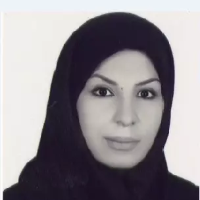Investigation and Study of Glass Artifacts of the Sassanid Period; Case Study: Jahangir Dome and Gouriyeh Glasses in Ilam Province using Micro-PIXE Technique
Studying the elemental composition of glass objects provide a lot of information about the manufacturing technique, the determination of the raw materials and the pigments were used to create different colors. In this study, 19 samples of glass objects obtained from the archaeological site of Jahangir Dome and Gouriyeh hill were analyzed by the micro-PIXE technique to measure the constituent elements. The Jahangir Dome and Gouriyeh hill are located 50 km northwest of Ilam on either side of the Kangir River. These sites excavated in three seasons by Leyla Khosravi from 2015 to 2017 and layers related to the Sassanid and the Early Islamic periods have been identified. In the layers of the Sassanid period a considerable amount of glass has been recovered that no comprehensive research has been done on them so far. The main purpose of this article is to study the glass industry of the Sassanid period and evaluate the raw materials were used in the manufacture of glass artifacts by micro-PIXE technique that followed by questions about the elemental composition of the glasses, identifying and examining sources of silica and flux raw materials, colorant and decolorant agent. The most important questions raised in this reach are:1- What kind of flux materials have been used in the glassware manufacturing process? 2- The colorant and decolorant materials used in the manufacturing process are deliberately added to the bath or are due to the iron oxide and manganese oxide existing in silica raw materials? The micro-PIXE analysis was performed with microprobe system manufactured by Oxford Instruments using the 3 MV Van de Graaff accelerators at the Nuclear Science & Technology Research Institute (NSTRI) in Iran. The samples were analyzed in a vacuum chamber using a beam of 2.5MeV protons focused to a diameter less than 10 μm. The beam current was in the range of 30 to 50 pA. Characteristic X-rays were detected using a Si(Li) detector with an active area of 60 mm2 positioned at an angle of 135◦ relative to the incident beam direction and with an energy resolution of 150 eV for Fe-Kα. The results of elemental composition show, the weight percentages of SiO2 (60-71wt.%), Na2O (11-20wt.%) and CaO (4-8wt.%) have the highest proportion of elemental composition in the samples. Also, the weight percentage of MgO (3-6 wt.%) and K2O (2-5 wt.%) in the analyzed glasses are greater than 1.5wt.%. Therefore, it can be concluded that the glass artifacts of these sites are silica-soda-lime glasses type, which is used the plant ashes as a flux. Furthermore, wide variations in the weight percentage of SiO2, Na2O, K2O and MgO indicate that silica and flux raw materials obtained from various sources. The comparison of these data by the literature data shows the raw materials used in these sites are different from those were used in glasses excavated in Sassanid sites in Iraq. In addition, the elemental composition of these samples show that Fe2O3 and Cu2O are the colorant agents and MnO has been used as a decolorant element in the samples. However, in Jahangir Dome, these oxides were used unintentionally, but in the Gouriyeh, MnO is added deliberately to the bath.
-
The Study of Jahangir Dome and Guriye Stucco Decorations: With an Emphasis on Applied Geometry
*, Leila Khosravi
Persica Antiqua, Jan 2023 -
Typology, Morphology, and elemental analysis of Early Islamic period glass bracelets from Jahangir dome and Goriye tape in Ilam province.
*, Davoud Agha Ali Gol, Leila Khosravi
Journal of Research on Archaeometry,


